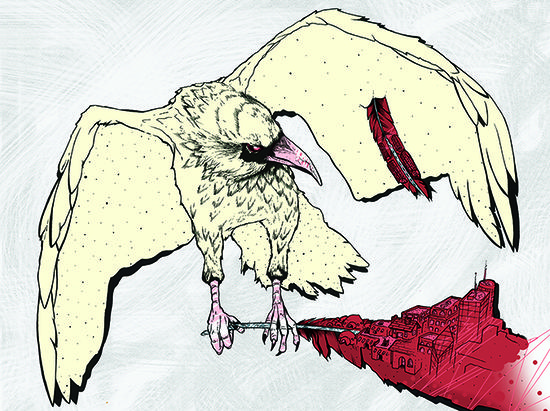SFI Innovation Short Course 2016 - Faculty 2016
From Santa Fe Institute Events Wiki
| Education Event Navigation |
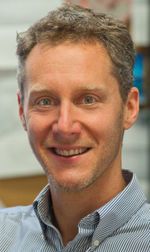
Josh Bongard, Cloud Robotics
What kinds of innovation are possible once large numbers of people, computers, and autonomous machines can interact with each other through the web?
Bio
Associate Professor, Department of Computer Science, University of Vermont
There are two main thrusts in my research group: evolutionary robotics and machine science. In our evolutionary robotics work, our long-term goal is to enable increasingly large numbers of non-experts to direct the evolution of increasingly complex, capable, and autonomous machines to perform a widening array of difficult tasks. This involves work in theoretical biology: what mechanisms from biological evolution must be incorporated into an evolutionary robotics system to increase its evolvability? It involves work in embodied cognition: how does one spread ‘computation’ out across not only the neural controller of the machine, but also its morphology? It involves work in computational neuroscience: what kinds of neural models should be instantiated in our evolving robots? Finally, our work has psychological and philosophical implications: if a robot evolves that exhibits the behavioral manifestations of high-level cognitive competencies such as self-awareness, how can we determine whether a robot actually possesses, rather than just simulates, that competency? In our work on machine science, we attempt to automate as best we can all aspects of the scientific process: hypothesis generation, selection of phenomenon to measure, experimental design, and data collection. (Machine learning, in contrast, only focuses on hypothesis generation.) My overall strategy is to select generally high-risk, high-reward research questions that, if validated, are likely to change our thinking about seemingly obvious approaches, such as focusing only on control, rather than both morphology and control, in robotics
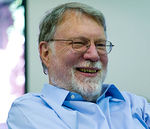
John Seely Brown, Managing radical innovation
John Seely Brown or as he is often called—JSB—is the Independent Co-Chairman of the Deloitte’s Center for the Edge and a visiting scholar and advisor to the Provost at University of Southern California (USC). A master integrator and instigator of productive friction, JSB explores the whitespace between disciplines and builds bridges between disparate organizations and ideas.
Prior to that he was the Chief Scientist of Xerox Corporation and the director of its Palo Alto Research Center (PARC)—a position he held until June 2000. In his more than two decades at PARC, Brown transformed the organization into a truly multidisciplinary research center at the creative edge of applied technology and design, integrating social sciences and arts into the traditional physics and computer science research and expanding the role of corporate research to include topics such as the management of radical innovation, organizational learning, complex adaptive systems, and nano-technologies. He was a cofounder of the Institute for Research on Learning (IRL). His personal research interests include digital youth culture, digital media, and the application of technology to fundamentally rethink the nature of work and institutional architectures in order to enable deep learning across organizational boundaries – in brief, to design for emergence in a constantly changing world.
Ross Buhrdorf, Panelist
Santa Fe Institute Trustee
Ross Buhrdorf began his career in technology with positions at DataGeneral, Tandem Computers and HAL Computers after graduating from University of Texas at Austin with a Bachelor’s degree in computer science. Buhrdorf held the position of VP of Engineering at Excite.com, where he managed a team of two hundred engineers globally. Buhrdorf and his team handled multiple acquisitions and drove the “Communities” area of the site handling traffic of 40 million daily page views, which ultimately aided Excite in becoming the fastest growing company in Silicon Valley in 2000.
Buhrdorf joined HomeAway shortly after its inception to oversee technology, trust and security, hosting, corporate IT, infrastructure and global customer systems. While at HomeAway Buhrdorf has assembled the development and engineering team from five employees to over 200 hundred employees world-wide. Buhrdorf was an integral piece in the integration of multiple technology systems that contribute to the company’s rapid growth. Some of the highlights of Buhrdorf’s career at HomeAway include, leading the company through it’s first Super Bowl ad campaign in February 2010. Buhrdorf and his team fortified HomeAway.com for the sizable traffic surge generated from it’s national ad. His work helped HomeAway to rank second in site traffic generated from a Super Bowl ad and second in site responsiveness and performance.
More recently Buhrdorf was awarded the 2011 CTO of the year award from Austin AIPT. Recipients of this award are recognized for the ability to use technology to better the lives of the communities they serve through leadership, innovation, creativity, impact and process transformation. Being honored by the AIPT is the most distinguished award the Austin IT community has to offer.
Buhrdorf is a life long entrepreneur and angel investor. He has invested in Capital Factory, one of the top incubators for young startups in the country where he mentors young entrepreneurs to success.
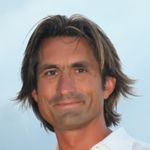
Jeffrey DeCoux, Panelist
Entrepreneur/Investor
Mr. DeCoux works with emerging technology companies with financing, marketing and industry leadership. He has over 20 years experience within the high-tech industries where his attention has been focused on visionary ways of interacting with customers and enhancing business productivity.
Mr. DeCoux is CEO of Hangar Technology, Inc. Hangar is a software technology company focused on harnessing the opportunity presented by the mass-adoption of drone hardware and the market demand for the data these drones can provide. Hangar integrates cutting-edge technology with existing drones to provide solutions across industries. This data is processed and analyzed using proprietary and market leading technology to deliver actionable results to businesses.
In his prior experience, Mr. DeCoux was President and CEO of eCustomers, Inc. a leading provider of Enterprise Customer Response software. The eCustomers software drastically reduced the costs related to customer engagements by personalizing the experience. eCustomers raised over $30 million in financing and developed a leadership Board that included visionaries Allan Loren (Executive VP at American Express); Bobby Martin (President of Walmart International); Lou Hughes (President of GM International) and Gerald Storch (Vice Chairman of Target).
At 24, Mr. DeCoux was a Founder and President/CEO of SMART Technologies, a leading provider of Enterprise Relationship Management (ERM) software. Under his leadership, SMART achieved over $8 million in revenue its second year of operation. Mr. DeCoux led SMART through its incredible growth to over 200 employees; the recruitment of a strong management team and board including Jimmy Treybig (founder of Tandem), Andrew Heller (IBM Fellow) and Peter Solvik (CIO at Cisco). Mr. DeCoux raised over $20 million in funding from recognized names such as Goldman Sachs, SAP and Austin Ventures and realized several Fortune 100 corporations as customers. Mr. DeCoux assured the acquisition of SMART Technologies in 1999 to i2, which amounted to over a billion-dollar acquisition.
Prior to SMART, Mr DeCoux was President and CEO of MIS2, a Customer Interaction consulting practice experienced with building high-end SFA and CRM systems for the Fortune 100. Mr. DeCoux holds a deep knowledge of the technology industry and a life long passion for innovation.
He serves as Director for his Community Association, an organization he created to properly manage its operations.

Jessica Flack, How digital technology affects human social networks
Santa Fe Institute, Resident Faculty
Flack's research focuses on coarse-graining and collective computation in nature and their role in the evolution and development of new levels of biological and social organization and kinds of individuality. In other words, the origins of biological space-time.
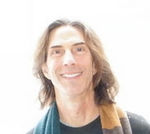
Eric Henderson, DNA Origami
Iowa State University, Professor of Genetics, Development, and Cell Biology
Eric teaches, promotes and practices rule breaking (when appropriate), fearlessness, and entrepreneurship in all facets of life. He has been involved in several companies including: Bio Force Nanosciences, Inc., (biotech); Aspera Corp (biotech); Creodyne, llc (tech development); Bumblefunk Music (media); Hello Holdings (Griffle, GriffleGames, Griffle TV; media); eMoJoCo, llc (art and media)
Eric is always looking for challenges and opportunities to work with young entrepreneurs. On the side Eric is a performing musician, fiction writer, tinkerer, and gadget freak. Henderson's laboratory takes an enormously multidisciplinary approach to the study of the interface between biology and nanotechnology (or, more generally, life and technology). This area of inquiry can be labeled either bionanotechnology or synthetic biology. The label is of no importance. What is important is that 3.6 billion years of biological evolution has resulted a vast library of deeply tested pathways to addressing the dreams of nanotechnology. Their challenge is to understand and, in a practical fashion, transfer these insights to the emerging field of bionanotechnology.
Henderson's research team has developed a complex, multidimensional mechanical system made out of DNA for testing molecular bonds and detecting molecular species. They have also developed enhancements to the process of DNA origami that expand the opportunity space for DNA-based nanosystems substantially. Additional ongoing projects involve “shape-shifting” DNA nanodevices and computational methods for generating the tools required to fully exploit the potential of DNA-based nanosystems.
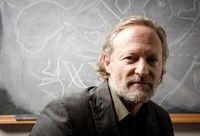
David Krakauer, President of Santa Fe Institute - Welcome and Introduction to SFI
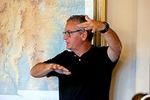
Jose Lobo, Exploring Complexity in Invention: Insights from Studying Patenting
Jose is a Professor of Sustainability at Arizona State University.
Patents granted by the U.S. Patent Office, representing a record of inventive activity spanning over 200 years, have become a widely used (and abused!) data source for studying invention and innovation. Several prominent themes in the investigation of technological change informed by complexity science---invention as both a combinatorial and a search process, innovation as an evolutionary process, technology landscapes, technological change as driven mainly by the accumulation of incremental modifications---can be rendered empirical through the use of patent data. In this lecture I will summarize recent research on technological change informed by a complexity perspective which has used patent data. The lecture will emphasize what patent data can inform us about, the insights gained from bringing a complexity perspective to the study of patenting, and the differences between invention in the biological and the socioeconomic-cultural realms, and the current controversy as to whether teh rate of technological change has slowed down.
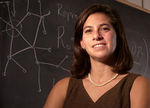
Lauren Ancel Meyers, Innovation in Epidemiology
Santa Fe Institute, Science Board, External Professor
Professor and Director, University of Texas at Austin, Section of Integrative Biology and Institute for Cellular and Molecular Biology
Dr. Meyers received her B.A. degree in Mathematics and Philosophy in 1996 from Harvard University and her Ph.D. in 2000 from the department of Biological Sciences at Stanford University. After completing a postdoctoral fellowship from the National Science Foundation, she joined the faculty of Integrative Biology at the University of Texas at Austin in 2003. Using a combination of mathematical modeling and experiments, Lauren’s research lies at the interface of evolutionary biology and epidemiology. She studies the interplay between disease transmission dynamics and the evolution of pathogens including those responsible for epidemic meningitis, influenza, walking pneumonia, and SARS. Based on this research, the MIT Technology Review recently named Lauren as one of the top 100 global innovators under age 35. Dr. Meyers conducts research in two general areas. The first is mathematical epidemiology. Over the last five years, she has been developing new network-based mathematical approaches for predicting the spread of infectious diseases and collaborating with public health officials in the US and Canada to apply these methods to designing optimal control measures. Her second research area is theoretical evolutionary biology, with a particular focus on (a) the impact of environmental heterogeneity on evolutionary dynamics and (b) the structure of complex fitness landscapes.

Dutch MacDonald, The Nature of Things: Surviving and Succeeding in the Trillion Node Network
Talk Description
Dutch MacDonald and his team at MAYA Design are exploring the impact on design in the next information area. Often called the Internet of Things, pervasive computing is a
game-changer that's on a collision course with two complementary trends—digital
manufacturing and machine learning. These three trends, taken together, give us the
ability to shift to an entirely new set of design and business paradigms. In 2012, MAYA’s founders co-authored one of the essential field guides to the era of pervasive computing, Trillions. In this course, Dutch will explore the power of Trillions and the challenges that designers, engineers and entrepreneurs face in this brave new world. The future will be claimed by those who know how to surf these trends, what to do about them, and how the act of designing "things" will change in a Trillion Node Network.
Bio
Dutch MacDonald is president and CEO of MAYA Design, a leading design consultancy and innovation lab made up of visual designers, engineers and human scientists who work at the intersection of information, technology and human experience to develop solutions in the service of people. Prior to joining MAYA, Dutch practiced architecture for more than 17 years, and was most recently vice president at EDGE Studio, one of the country’s most respected and creative architectural practices.
Along the way, he became fascinated with the impact of pervasive computing on the built environment, and how a world saturated with computing must also be saturated with good design. He has been using design thinking to help address these challenges for people, organizations, and communities ever since.
Dutch studied architecture at Carnegie Mellon University, where he is an adjunct associate professor in the School of Architecture. He also studied at the Ecole Polytechnique Federale de Lausanne in Lausanne, Switzerland, where he lived and worked. Dutch has been featured in publications such as Dwell, Architectural Record, Metropolitan Home, and Fast Company.
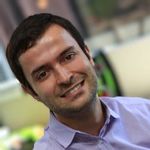
Rafael Pereira, No ONE right way — Solving problems and adapting methodologies at data.world
Director of Software Engineering at data.world
Talk Description
At data.world we are building the most meaningful, collaborative, and abundant data resource in the world. That is an ambitious goal and the territory is uncharted. As a modern startup, our focus is on the search for a scalable business model, more so than on the execution of a plan. Learn about how we deal with that complexity in very practical ways. I will talk about what theories, frameworks, and methodologies that inspire our process and the importance of never believing that there is just one right way.
Bio
Besides being a software engineer by training, Rafael has devoted his career to entrepreneurship. The scope of his work concerns primarily with execution — working across departments and with people to deliver software products with priority on value creation, market fit and engineering excellence.
Working at IAC in New York, Rafael had the opportunity to form, lead and turnaround a number of product and engineering teams working on new and existing web, mobile, social and ad-tech products, B2B and B2C. Currently at data.world, he is building the most meaningful, collaborative and abundant data resource in the world in order to maximize data's societal problem-solving utility.
{border}
Steen Rasmussen - Major impacts of technology on the evolution of human society
Santa Fe Institute External Professor; Professor, Research Director and Center Leader, University of Southern Denmark, Self Organizing Systems
Born July 7, 1955 in Helsingoer (Elsinore), Denmark. Citizen of Denmark. Permanent Residence in U.S.A. (Alien of Extraordinary Ability). Formal education, PhD Physics. Focused on representing, generating, analyzing, and controling self-organizing and related systemic processes as they are manifested in natural and human-made systems. Current and recent projects include assembly of protocells, web-based decision support systems, simulation of critical infrastructure protection, and the development of simple urban dynamics simulations.

Gustavo Sorola, Panelist
Co-founded Rooster Teeth
Gus Sorola co-founded Rooster Teeth Productions in 2003 in Austin, TX. Over the past thirteen years he has created and overseen the technology department, broadcast division, events, and he now currently oversees all virtual reality and augmented reality projects at Rooster Teeth Productions.
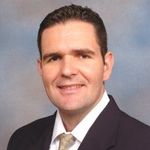
Marcelo Vieira , Panelist
TasteBud
As the General Manager for Predictive Intelligence business at Intel, Marcelo Vieira
has responsibility for setting the vision, strategy, execution and business plan around
predictive intelligence as a service. Vieira is passionate about computing intelligence
and developing technology that understands the “Essence of Me”, which will be
applied across multiple markets to improve companies and people’ lives.
Prior to his current role as the GM of Predictive Intelligence at Intel, Vieira was the
GM of Strategy and Business Development for the Ultra Mobility Group at Intel. Vieira,
lead the team that drove and closed all of the Intel Smartphone customer
engagements and announcements at CES and MWC 2012, effectively putting Intel as a
credible contender in the Smartphone space.
Marcelo also served as the general manager of the OMAP™ products organization for
the Texas Instruments Incorporated (TI) wireless business unit, Marcelo Vieira was
responsible for defining all aspects of the OMAP platform and roadmap including,
Silicon, Software, Hardware Platforms and IP development. Marcelo also had
responsibility for Marketing and the WW Ecosystem organizations for the OMAP
processors.
Vieira also served as the worldwide general manager for TI’s smartphone business, with responsibility for a PnL greater than $500M per yr . In addition, he was the general manager for TI’s digital imaging business unit, where he led the group’s business strategy, marketing and engineering teams and general operations. In this role, he developed complete digital still camera reference designs that enabled customers to deliver products with reduced time to market and resources. Vieira holds a bachelor’s degree in electrical engineering from the University of Texas at Austin, an Executive MBA from the Cox School of Business at SMU and a degree of proficiency in English from the University of Cambridge. He also has significant international experience. He has lived in multiple parts of South America, is fluent in Portuguese (his native language) and Spanish, and semi-fluent in French.

